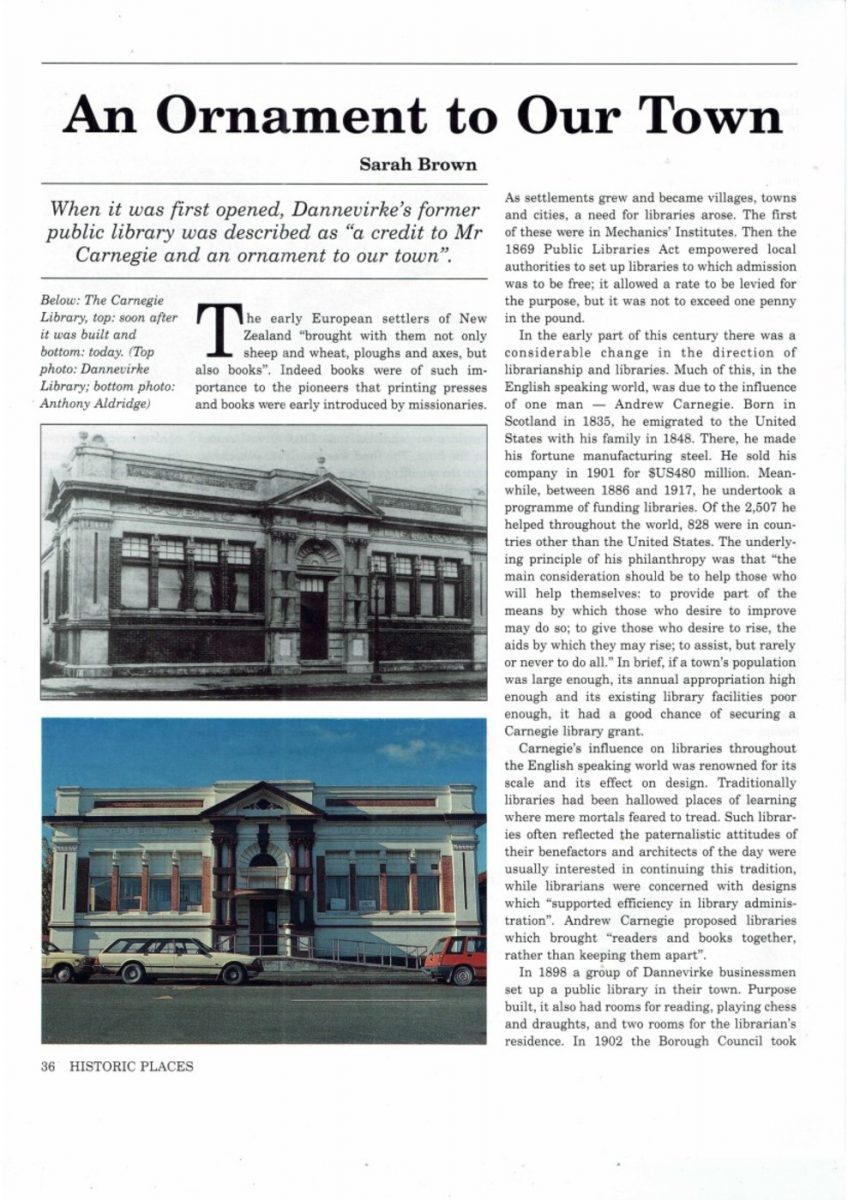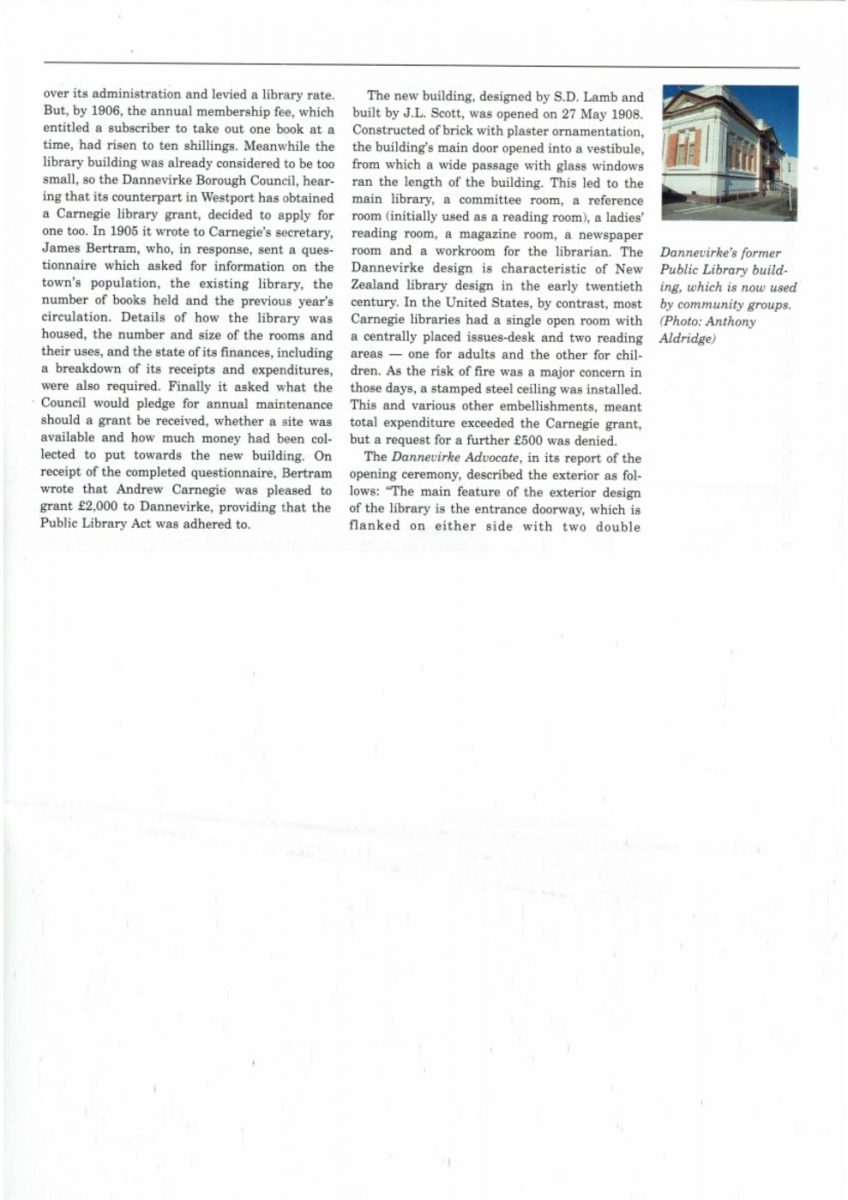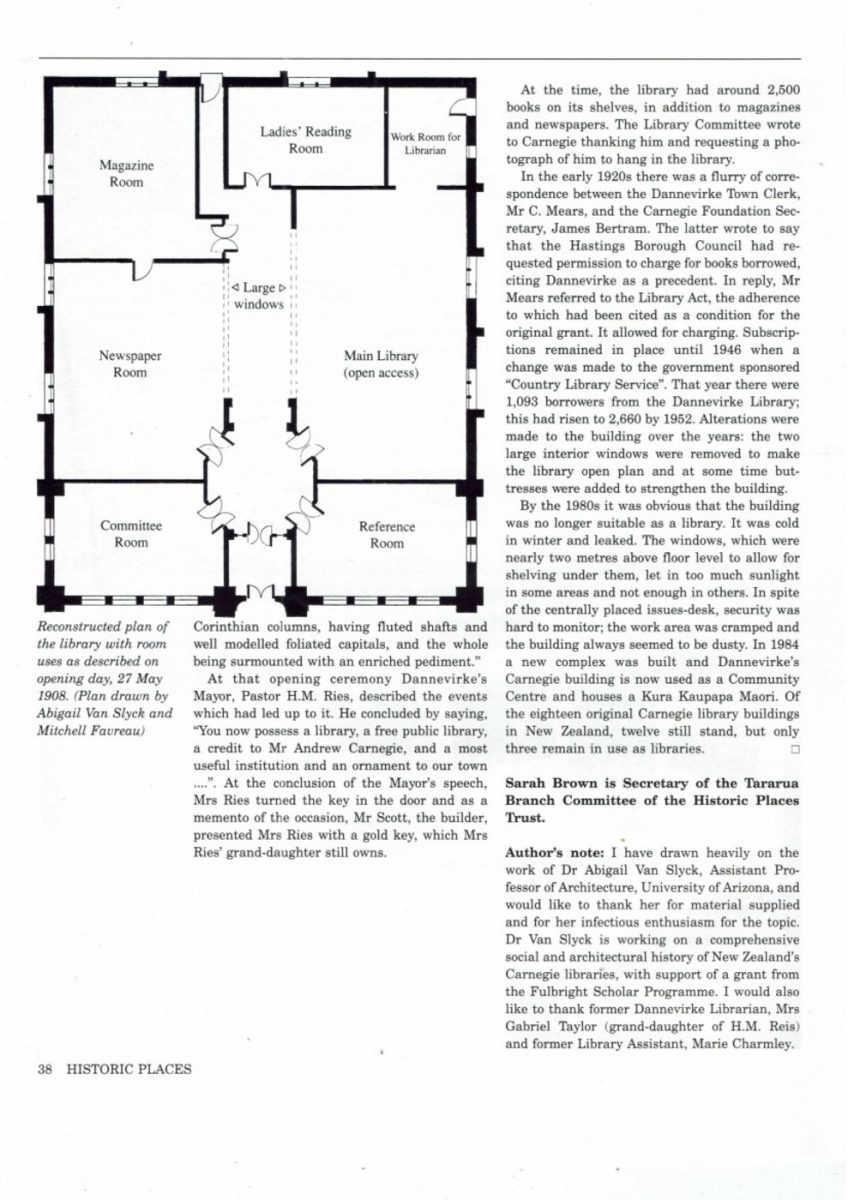Corinthian columns, having fluted shafts and well modelled foliated capitals, and whole being surmounted with an enriched pediment.”
At that opening ceremony Dannevirke’s Mayor, Pastor H.M. Ries, described the events which had led up to it. He concluded by saying, “You now possess a library, a free public library, a credit to Mr Andrew Carnegie, and a most useful institution and an ornament to our town …”. At the conclusion of the Mayor’s speech, Mrs Ries turned the key in the door and as a memento of the occasion, Mr Scott, the builder, presented Mrs Ries with a gold key, which Mrs Ries’ grand-daughter still owns.
At the time, the library had around 2,500 books on its shelves, in addition to magazines and newspapers. The Library Committee wrote to Carnegie thanking him an requesting a photograph of him to hang in the library.
In the early 1920s there was a flurry of correspondence between the Dannevirke Town Clerk, Mr C. Mears, and Carnegie Foundation Secretary, James Bertram. The latter wrote to say that the Hastings Borough Council had requested permission to charge for books borrowed, citing Dannevirke as a precedent. In reply, Mr Mears referred to the Library Act, the adherence to which had been cited as a condition for the original grant. It allowed for charging. Subscriptions remained in place until 1946 when a change was made to the government sponsored “Country Library Service”. That year there were 1,093 borrowers from the Dannevirke Library; this had risen to 2,660 by 1952. Alterations were made to the building over the years; the two large interior windows were removed to make the library open plan and at some time buttresses were added to strengthen the building.
By the 1980s it was obvious that the building was no longer suitable as a library. It was cold in winter and leaked. The windows, which were nearly two metres above floor level to allow for shelving under them, let in too much sunlight in some areas and not enough in others. In spite of the centrally placed issues-desk, security was hard to monitor; the work area was cramped and building always seemed to be dusty. In 1984 a new complex was built and Dannevirke’s Carnegie building is ow used as a Community Centre and hoses a Kura Kaupapa Maori. Of the eighteen original Carnegie library buildings in New Zealand, twelve still stand, but only three remain in use as libraries.
Sarah Brown is Secretary of the Tararua Branch Committee of the Historic Places Trust.
Author’s note: I have drawn heavily on the work of Dr Abigail Van Slyck, Assistant Professor of Architecture, University of Arizona, and would like to thank her for material supplied and for her infectious enthusiasm for the topic. Dr Van Slyck is working on a comprehensive social and architectural history of New Zealand’s Carnegie libraries, with support of a grant from the Fulbright Scholar Programme. I would also like to thank former Dannevirke Librarian, Mrs Gabriel Taylor (grand-daughter of H.M. Reis [Ries]) and former Library Assistant, Marie Charmley.
Photo caption – Reconstructed plan of the library with room uses as described on opening day, 27 May 1908. (Plan drawn by Abigail Van Slyck and Mitchell Favreau)
Text on diagram –
Magazine Room
Ladies’ Reading Room
Work Room for Librarian
Newspaper Room
Large windows
Main Library (open access)
Committee Room
Reference Room
38 HISTORIC PLACES














Do you know something about this record?
Please note we cannot verify the accuracy of any information posted by the community.